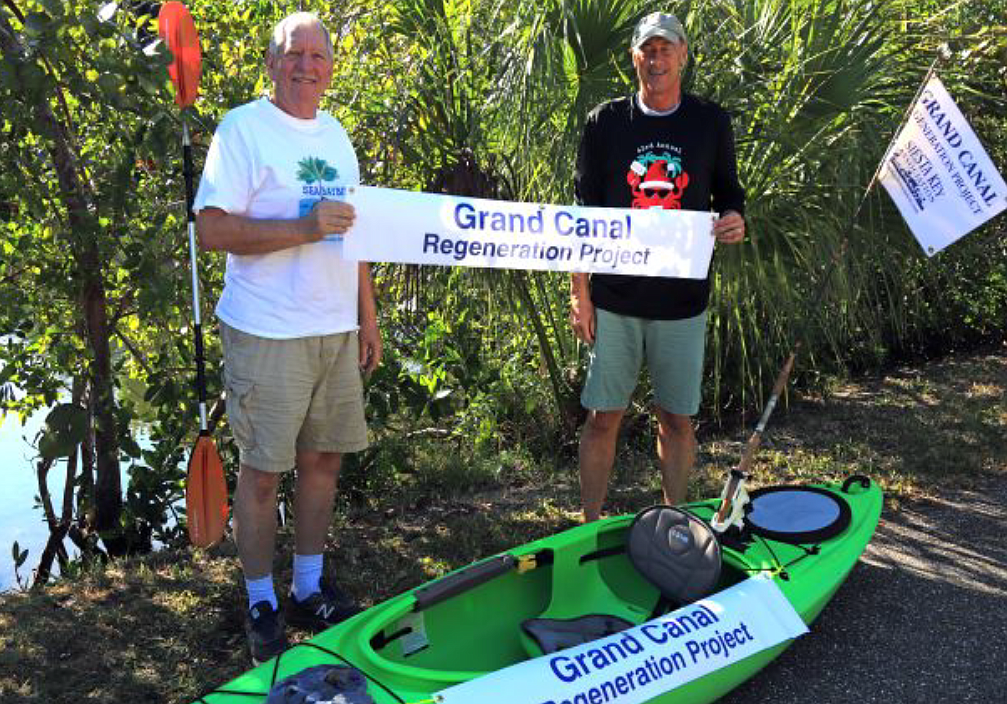- January 17, 2025
-
-
Loading

Loading

Around 880 homes along Siesta Key’s Grand Canal have docks, and thanks to a grassroots effort, about 60 of them now have mechanisms to help clean the murky canal water.
In December 2020, members of the Siesta Key Association began a pilot program asking homeowners along the canal to install passive devices called mini reefs under their docks to attract marine species that naturally improve water quality.
Jean Cannon, who has helped lead the effort, said when she started asking homeowners to participate, she expected about 10 participants. However, after the first week, she had 23 interested homeowners.
“The interest was just incredible,” Cannon said. “I wasn’t expecting that many.”
And it hasn’t slowed down. After a planned installation in February, around 80 homes will have the devices tethered to their docks. The reefs are 3 feet wide, 2 feet deep and 2 feet tall with four levels to attract sea life.
Once established, each reef can host enough life to filter 30,000 gallons of water daily.
David Wolff, the executive director of the mini reef company Ocean Habitats, said the company has been looking to take part in a large-scale deployment.
“As far as restoring nursery habitat, there’s almost no one else on the planet doing that besides people who plant mangrove trees,” he said.
Now that the pilot has plenty of participants, organizers are turning to measuring results.
SKA members Phil Chiocchio and David Vozzolo, along with Wolf and Armando Ubeda, a Florida Sea Grant agent at the University of Florida Institute of Food and Agricultural Sciences, will monitor the species and water samples in the canal to measure the program’s success.
The canal’s 9 miles have been divided into four sections — Grand Canal, Ocean Beach/Sarasands, Palm Island and Siesta Isles — for monitoring.
Cannon said the Ocean Beach/Sarasands area only has six participants, so a large focus will be getting more reefs installed there. Additionally, homeowners on the Gulf side and along the Intracoastal Waterway have offered to install reefs as well.
The research is funded with money already raised for the program. However, SKA members are hoping to secure grants from Gulf Coast Community Foundation and Mote Marine initiatives that are focusing on bringing healthier waterways to the area.
If SKA secures funding, Cannon said it would allow its members to branch out from the pilot program.
“The mini reefs can only go so far,” Cannon said. “We need to have more things: irrigators, we have to open the shoal, we have to do lots more things to make real change.”
Vozzolo said the funding also could be used to cover the cost of testing equipment and more advanced testing. Additionally, it could help set up an education program to teach homeowners best water ecosystem practices.
Those interested in joining can contact SKA at [email protected].